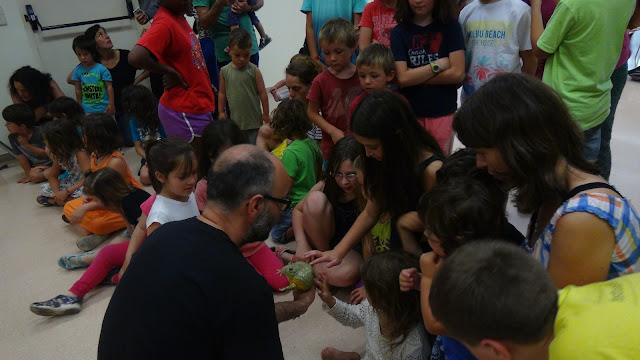Much
of this week, Judit and Sara have been focusing on their use of co-ordinates.
Last week they had begun to look at this topic and learn the vocabulary that is
linked to co-ordinates. They learned how to plot co-ordinates and find them.
The learning this week, reinforced this and added new skills such as
translating shapes, which means moving a shape along squares, using directions (left,
right, down and up) after they used translation they knew that they needed new
coordinates to mark out the new shape position on the quadrant. They also
looked at reflection of shapes, which meant that they created two quadrants.
This was also an introduction to using negative numbers and finding their link
and purpose to other integers. With using reflection of shape they revised
symmetry and were able to look at pattern.
Later
in the week, Judit and Sara began the topic of data handling. They looked at
several different versions of a chart and graph. They learned that information
can be collated into a table and this can be converted into various forms of
graph or chart such as a pictogram, bar chart, and line graph. They learned
that a pictogram is called this because a symbol can stand for the number in
data and a key is important. They learned how to answer questions to find out
information from a graph or chart. They used data to create a new graph.
In
their grammar this week the girls used the comma to separate parts of a
sentence. Judit used the comma to separate adverbials in her sentences.
Adverbials are parts of a sentence that describe time and place for an event to
happen. For example, This morning. With the comma you can tell that what
follows it is the main event such as I ate my breakfast. Putting these
two sentence parts together, you would need a comma to show that they fit
together but are separate pieces of information. This morning, I ate
my breakfast.
Sara
used the commas in the middle of a sentence to signify adding extra description
and information. For example. Judit, who is ten, is my sister.
In
their science this week, Judit and Sara learned about plant cells and how they
are used to help the plant to produce its own food from sunlight the process is
called photosynthesis. The girls understood how the light chemically helps the
plant to survive.
Jordi
had practised using the sound ‘ss’ to complete some words. He identified and
read the words with this ending correctly and he revised the sound ‘g’ to help
him to read words such as glass and gate. We began work together in counting in
pairs and Judit helped with setting Jordi some questions.































